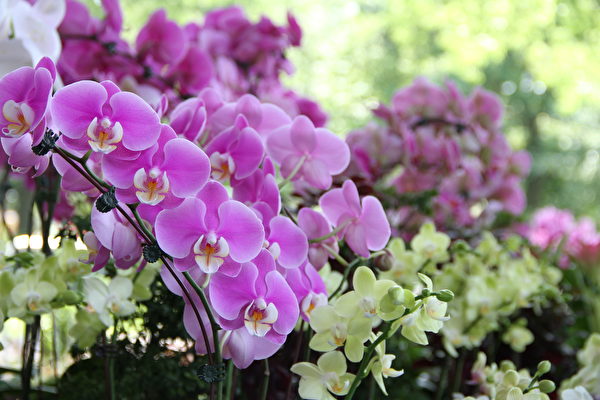Orchids are beautiful and elegant flowers, coming in a wide variety of species. However, they are often seen as difficult to care for, especially when it comes to ensuring they bloom again after their flowering period is over. Many people may not know what to do in order to guarantee their orchids will bloom again. In this regard, gardening experts have shared some simple yet crucial tips.
According to a report by the UK’s Daily Mirror, many people buy orchid plants when they are already in bloom, making it challenging to know what to do after their flowers fade to ensure they will bloom again the following year.
Canadian gardening expert and influencer Frankie Ferragine shared a simple and cost-effective method to ensure orchids bloom again. He recently revealed this secret on his YouTube channel.
Ferragine explained that by cutting the spent stems above the node, one can stimulate the orchid to continue blooming. The node is the protruding part on the stem, and trimming above it can trigger the growth and blooming of orchids.
After using this method, it takes a few months for new flowers to start growing. The key is to let the plant dry out a bit, as they need to experience some stress and be placed in a cooler room at night to further encourage growth.
The expert also pointed out that a common mistake people make when caring for orchids is overwatering them.
He said, “The main reason people can’t get orchids to bloom is that they give them too much water, too much fertilizer, and too much care. By reducing water and fertilizer, and keeping them cooler at night, you can stimulate new flower spikes to grow.”
Prior to this, the US magazine Better Homes and Gardens also outlined some key points on caring for orchids, including:
– Overwatering is the most common reason for orchids (and most indoor plants) dying. You don’t need to strictly follow a watering schedule (e.g., once a week or twice a week) for orchids. Instead, observe the plant’s condition and only water when necessary, depending on factors such as humidity, sunlight, air circulation, and potting soil.
– The simplest way to know when most orchids need watering is to check if the soil is too dry. Stick your finger about 1 inch (2.5 cm) into the potting soil and see if it’s dry or moist. Water immediately if it’s dry, and wait a day or two if it’s moist.
– You can also determine if your orchid needs watering by the weight of the pot. If it feels light, it’s time to water.
– Orchids should be planted in pots with drainage holes. When watering, the holes allow excess water to drain out, preventing the roots from rotting due to excessive moisture absorption.
The American Orchid Society suggests using fertilizers with little or no urea for orchids. You can mix water-soluble fertilizer with water for watering once a week. Before fertilizing, make sure the potting soil is slightly moist, as dry roots may get damaged.
Most orchids are tropical plants, but that doesn’t mean you need a tropical rainforest humidity level in your home to grow them. However, air conditioning at home can make the air dry, posing a challenge to orchids’ growth. Spraying a little mist on orchids daily or placing their pots on pebbles with moisture can create the necessary humidity.
Caring for orchids may differ from caring for other plants, but with basic skills mastered, they can become easy-to-care-for plants.
With their uniqueness, orchids can be displayed in fun ways to showcase their captivating flowers, such as placing them on hanging flower racks.
For first-time orchid growers, starting with a simpler variety like the Phalaenopsis orchid, also known as the moth orchid, is recommended before trying more challenging species in the future.
For more information on growing orchids, click here.

